'Disgusting' smell at Lough Neagh as algae spreads
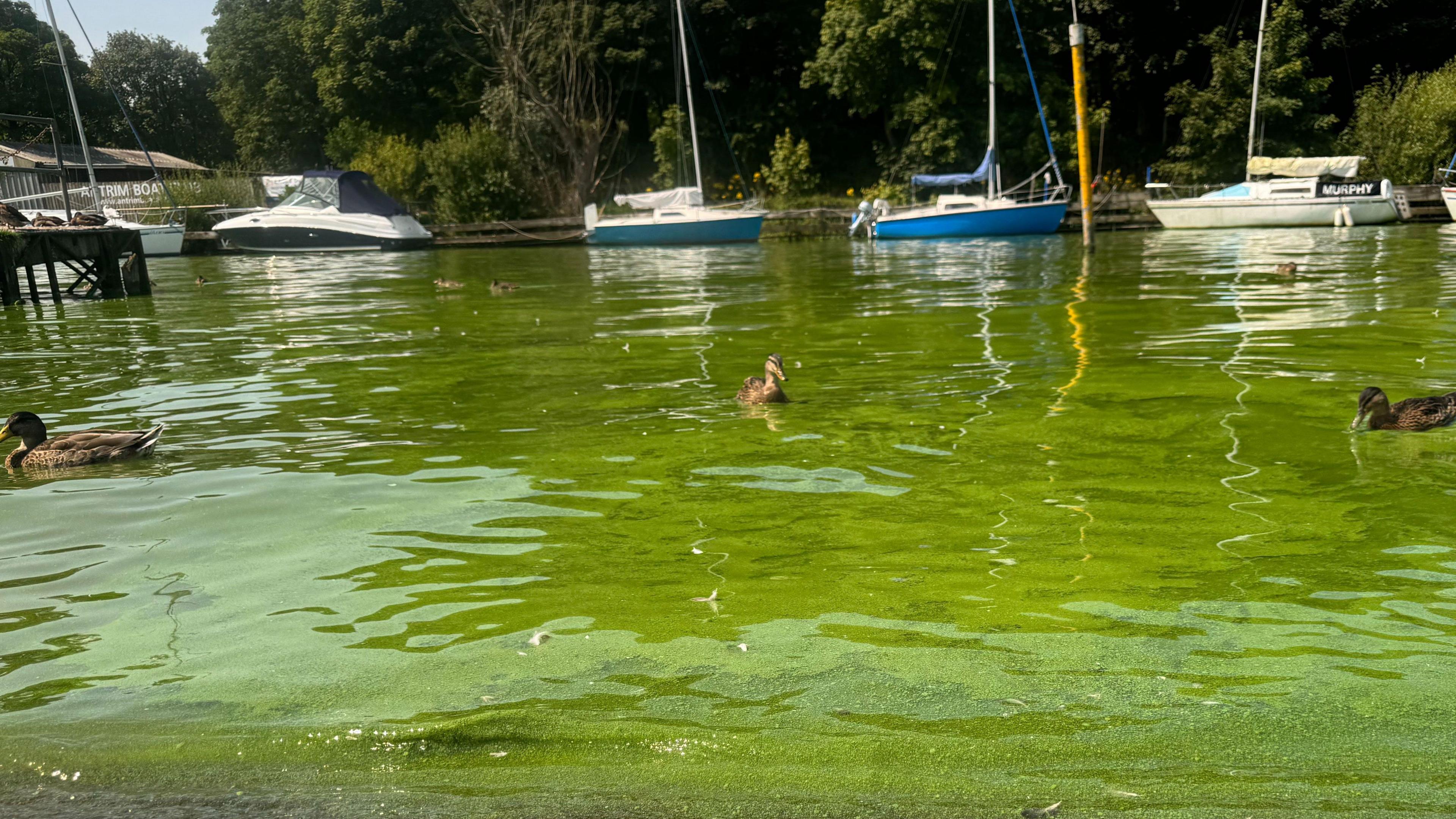
Large green mats of algae have formed around the lough, particularly in the north-east
- Published
Blue-green algae is back at 2023 levels in Lough Neagh.
Large green mats have formed around the lough, particularly in the north-east.
A "very sharp uptick" in the amount of potentially toxic algae has been noticed in recent days by scientists monitoring the lough.
Blue-green algae has already been detected in the Bann River system and scientists have said it could travel further up the north coast, where it closed bathing waters in Portstewart and Portrush last year.
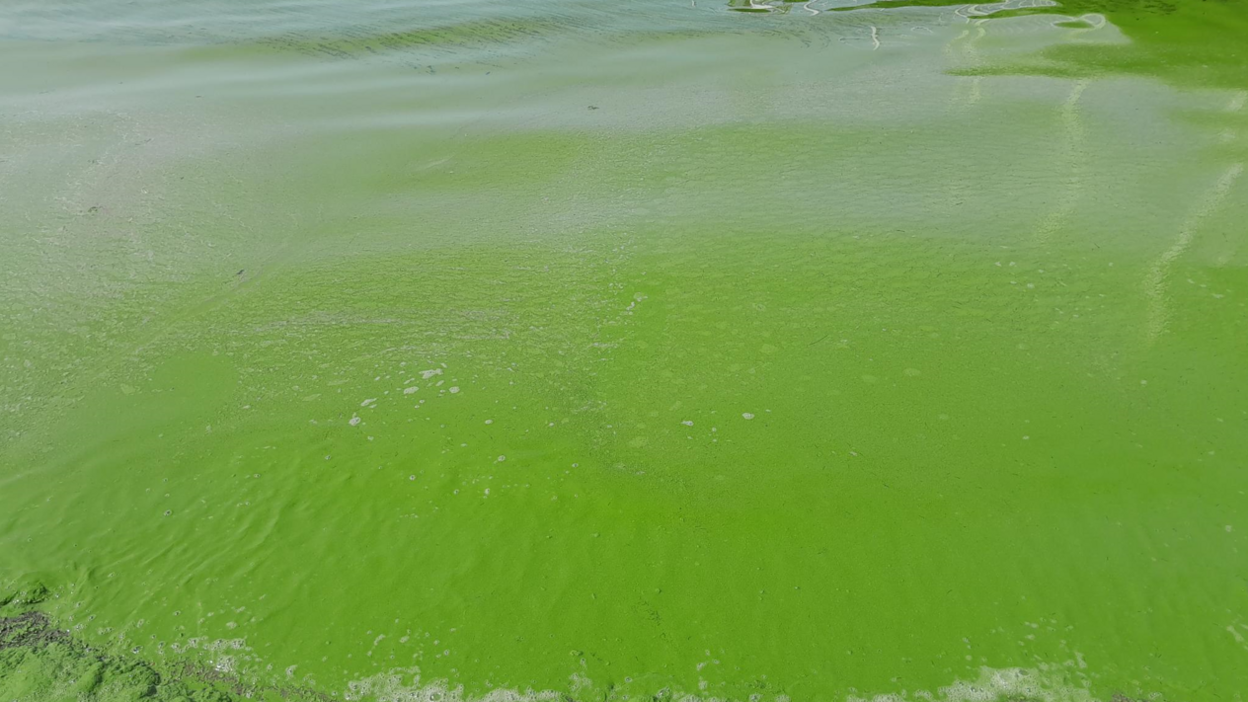
The water at Antrim was a green colour when BBC News NI visited on Thursday
Causeway Coast and Glens Council confirmed this week that blue-green algae had been most recently detected at Cloonavin in Coleraine.
While the algae may well make it to the coast, it cannot survive in salt water, but bathing bans or advisories may be used as a precaution until it has confirmed to have broken down.
The council has advised that people should not enter the water as a precautionary measure near Cloonavin and also advised pet owners to ensure their animals do not have access to this water.
Allow Facebook content?
This article contains content provided by Facebook. We ask for your permission before anything is loaded, as they may be using cookies and other technologies. You may want to read Meta’s Facebook cookie policy, external and privacy policy, external before accepting. To view this content choose ‘accept and continue’.
The algae are in fact bacteria, which can cause skin irritation and sickness in people who come into contact with it, but the biggest risk is to pets, livestock and wildlife.
Dr Matthew Service, from the Agri-Food and Biosciences Institute (AFBI), said blue-green algae spreads rapidly.
"It starts to double every seven to 14 days," he said.

Dr Matthew Service is among the scientists monitoring the lough
"So once you get to where you can see it, it's just going to keep going until either the climatic conditions change, there's not enough light for it to reproduce or it just simply breaks up with the autumn and winter weather," Dr Service said.
AFBI scientists have detected the algae out in the middle of Lough Neagh, showing the wind is moving the very buoyant species around and causing it to clump together - or "aggregate".
From the shoreline at Antrim, the water is visibly green.
'It is heartbreaking'
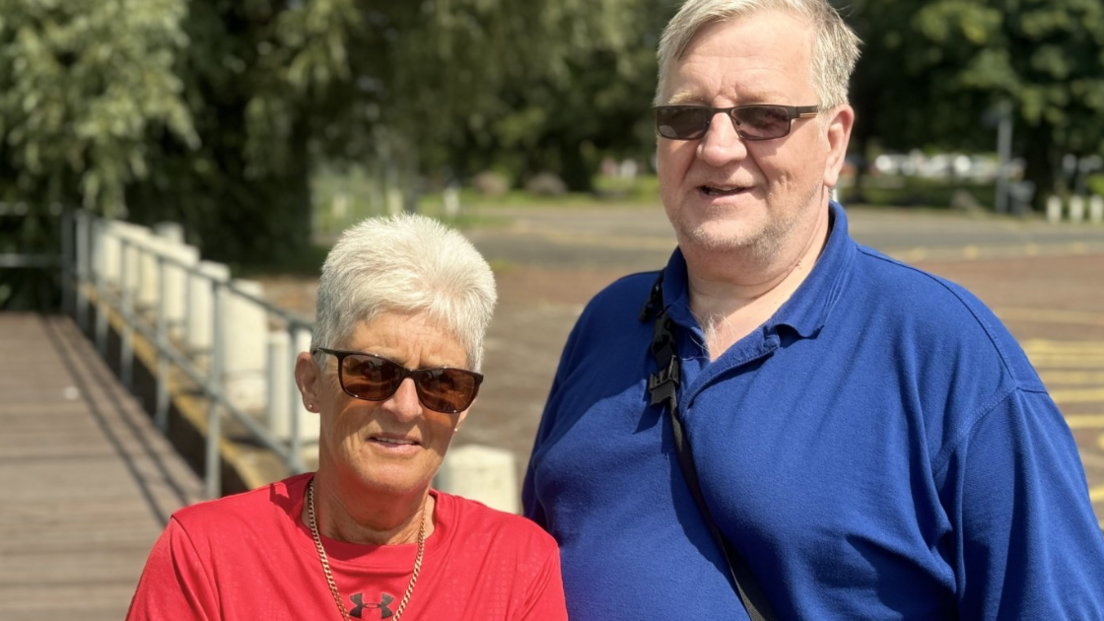
Karen and Allistair Gordon said they were shocked by the sight and smell of the lough
Regular walkers Karen and Allistair Gordon said they were "shocked" by the sight and the smell of the lough and the Sixmilewater river flowing into it.
"I just don't understand how it's got to this stage," said Mr Gordon, who is an amateur wildlife photographer.
"It's just heartbreaking to see."
Ms Gordon described it as "a very sad day".
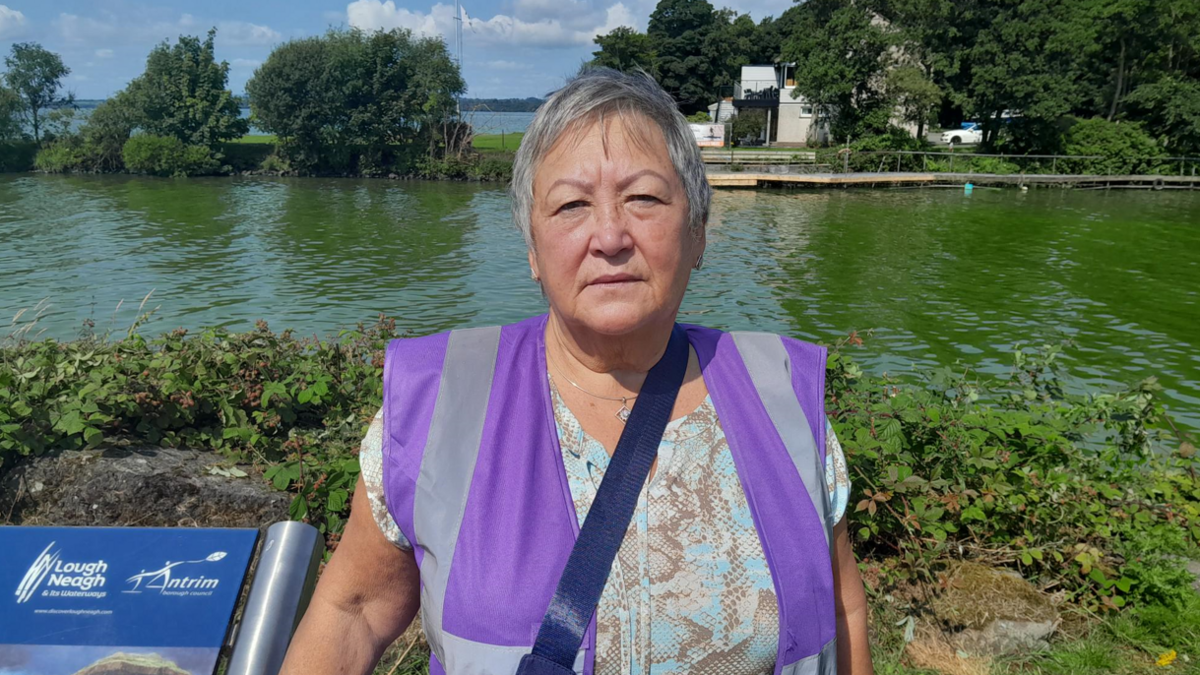
Teresa Greer said the smell from Lough Neagh was disgusting
When BBC News NI visited Antrim Lough Shore Park on Thursday, a number of people voiced their displeasure at the blue-green algae levels.
Teresa Greer, who is part of a walking group, said the algae on Lough Neagh was "absolutely ridiculous".
"The smell is disgusting," she added.
Ms Greer said some members of the walking group had to stop their stroll, as the "smell was so foul at Rea's Wood".
Rea's Wood is a nature reserve located at the north-east corner of Lough Neagh.
Last month, the Department of Agriculture, Environment and Rural Affairs (Daera) advised people against bathing at Rea's Wood due to "the presence of a thick algal scum".
Concern for dogs
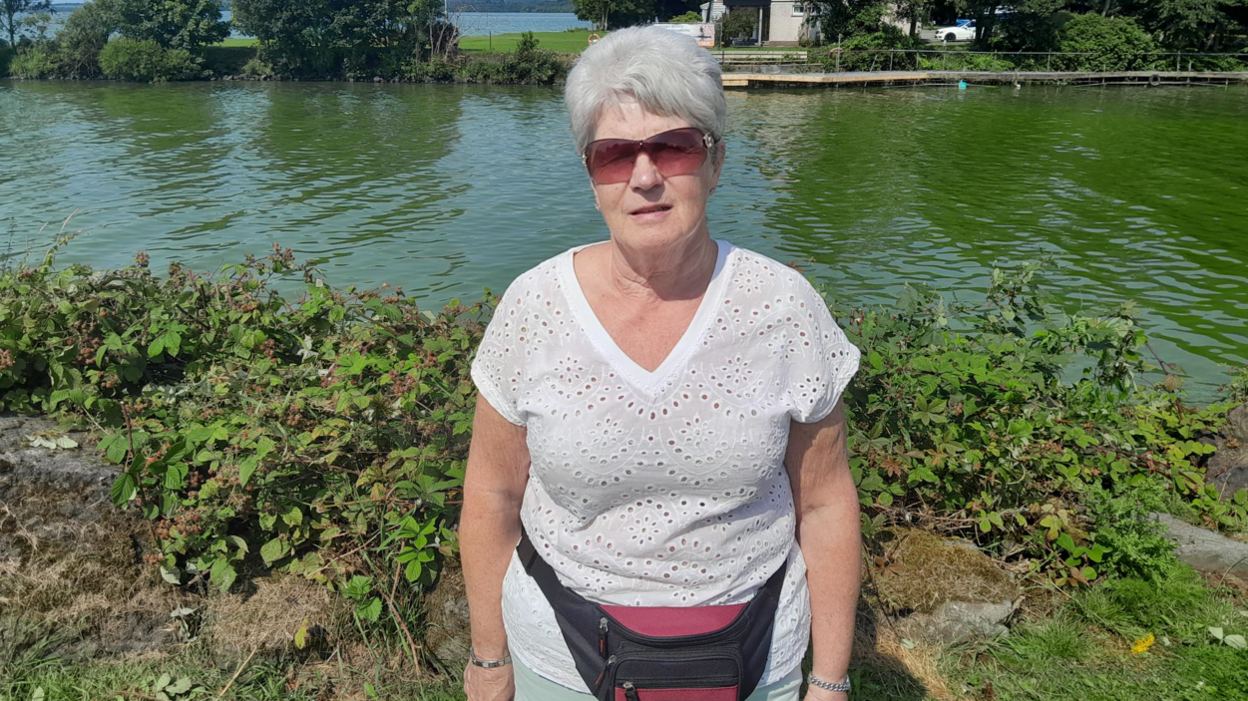
Anne Gregg says some of her relatives no longer walk their dogs at Rea's Wood
One of Ms Greer's walking companions, Anne Gregg, also expressed her concern about the algae.
"Dog walkers don't come up to Rea's Wood, near the water," she added.
"My son and brother won't walk their dogs there just in case.
"There is no quick fix," she added.

Gwen and John Dowling make regular trips to the park at Antrim from Lisburn
John and Gwen Dowling said they regularly make trips to Antrim Lough Shore Park, from their home in Lisburn.
Mr Dowling said he "would rather see the algae away", as it is "bad for wildlife".
"You want the wildlife to thrive," he said.
Ms Dowling said it "didn't look right" and "it is the first thing you notice".
"There is too much algae," she added.
The year the UK's largest lake turned green
- Published2 January 2024
What does the future hold for Lough Neagh?
- Published3 October 2023
Lough Neagh is the largest body of fresh water in the British Isles.
The lough supplies half of Belfast's drinking water and 40% of Northern Ireland's overall.
The Northern Ireland Executive approved an action plan for the future of Lough Neagh at a meeting earlier this month.
'Extremely distressing'
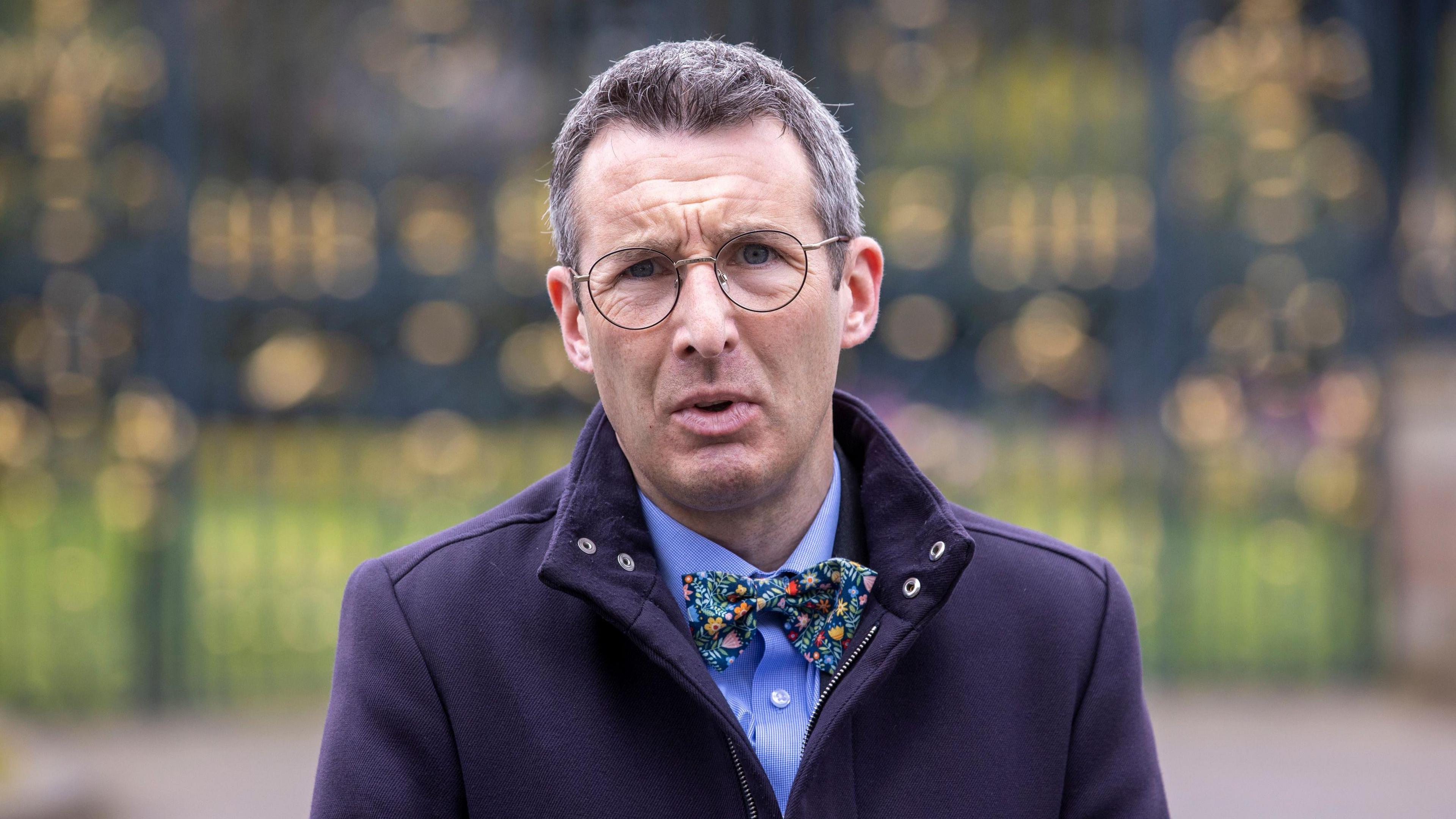
Minister Andrew Muir says the situation at Lough Neagh "will be decades in the fixing"
Following a private visit to Antrim Lough Shore Park on Thursday, NI Minister of Agriculture, Environment and Rural Affairs, Andrew Muir told BBC News NI's Evening Extra that the scenes at the lough were "extremely distressing".
"It’s sadly unsurprising because we’ve had a period here of warm weather and we shouldn’t have to be at the mercy of our weather in order to have a decent environment here in Northern Ireland," Mr Muir said on Friday.
He said the situation at Lough Neagh was "decades in the making and will be decades in the fixing".
Mr Muir said a number of measures within the action plan have already been implemented, but he added there is a "big issue" with resources.
The minister said the situation in Lough Neagh “is really a very shocking example of what happens when we don’t look after our environment and we don’t invest in those things”.
He said he will make bids at the Executive's monitoring round in October for further funding for Lough Neagh.
Declan Allison of Friends of the Earth told Evening Extra that the situation at Lough Neagh is "pretty shocking".
He has called for an independent environmental protection agency to be set up, "one that is independent of ministerial interference or political interference, one that can then actually enforce the law and can bring prosecutions".
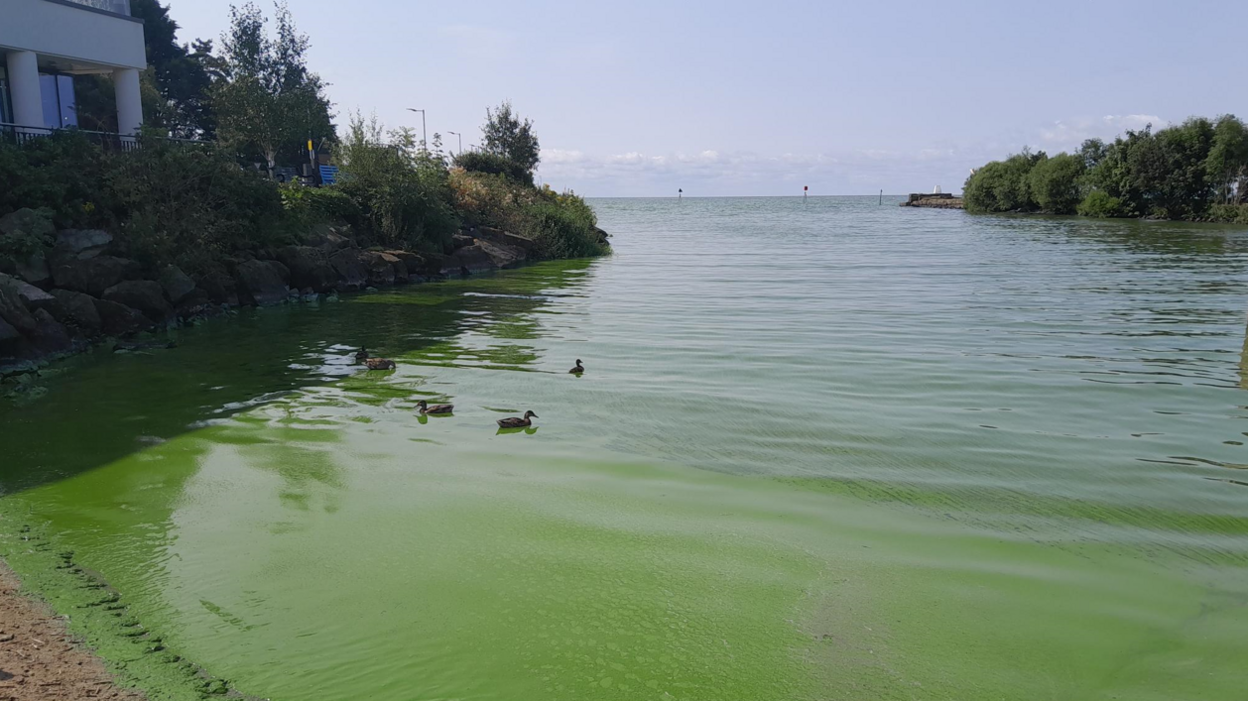
Lough Neagh supplies half of Belfast's drinking water and 40% of Northern Ireland's overall
The lough has been affected by blue-green algal blooms in recent months.
Scientists and officials agree it will take a long time to resolve the challenges of the lough.
"Unless the fundamentals change, it's unlikely to get any different result," Dr Service said.
"The fundamentals in the lough have not changed - the inputs are staying the same.
"The levels of nutrients are still high and of course the zebra mussels are still there."
Who owns Lough Neagh?
The ownership has been in the Earl of Shaftesbury's estate since the 1800s.
The rights to the lough were given a price tag of £6m 10 years ago, but civil servants at the time advised the government not to go ahead with the sale. It is not known why.
Nicolas Ashley-Cooper, who is the 12th member of his family to hold the title, told BBC News NI in October that a sale was something he was willing to discuss again.
However he has since said he would like to transfer his estate's ownership of Lough Neagh "into a charity or community trust model, with rights of nature included".
He said the proposal “may take time”.
Related topics
- Published18 July 2024
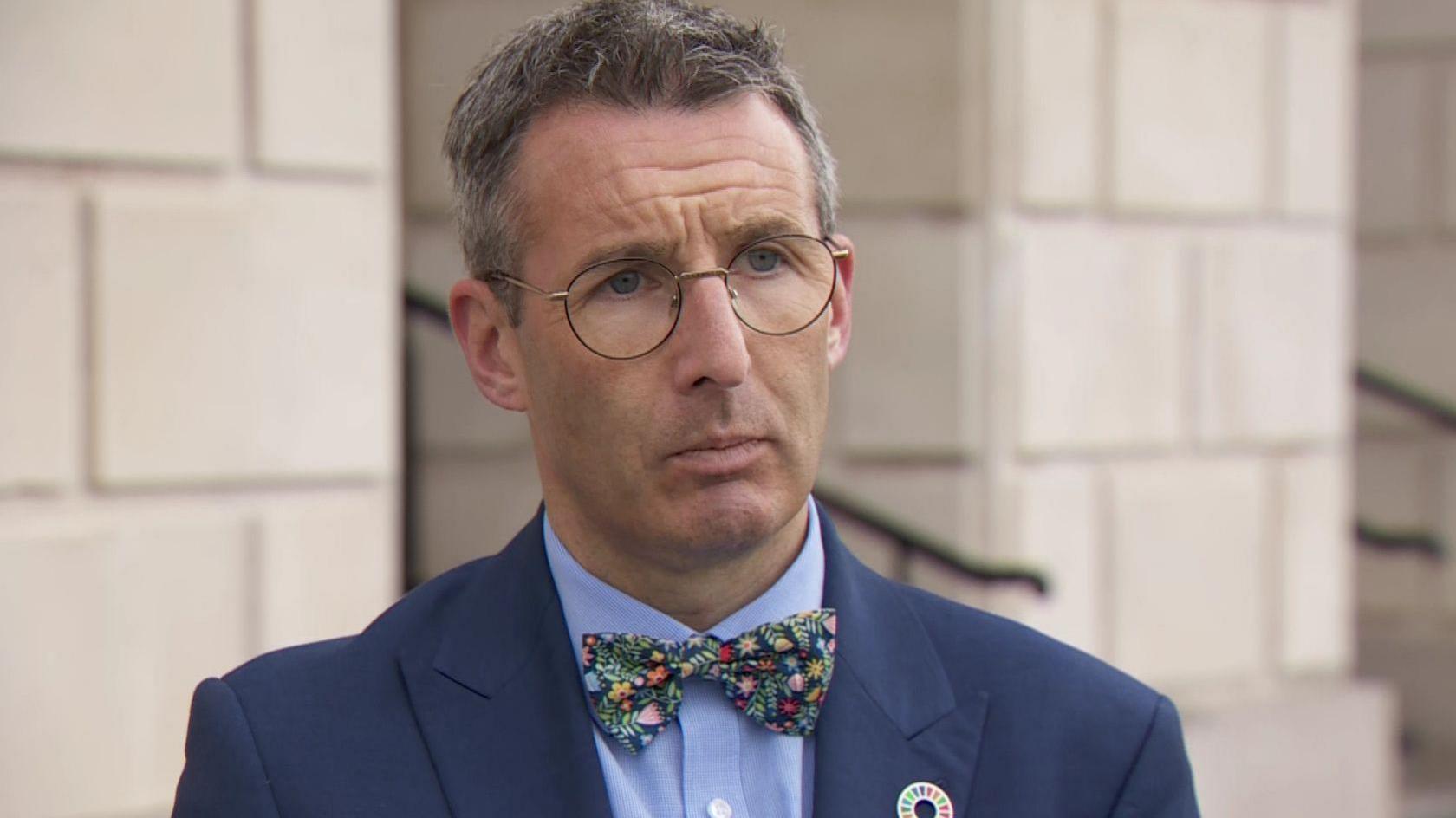
- Published17 July 2024

- Published2 July 2024
